KTM AG Enters Self-Administration to Restructure Debt

Pierer Mobility AG announced a “pit stop” for KTM AG, filing for insolvency by self-administration proceedings over the motorcycle business that includes KTM, Husqvarna, Gas Gas, and MV Agusta brands.
“Over the past three decades, we have grown to become Europe's largest motorcycle manufacturer. We inspire millions of motorcycle riders around the world with our products,” says Stefan Pierer, chief executive officer of KTM AG. “Now we are taking a pit stop for the future. The KTM brand is my life's work, and I will fight for it.”
The move comes as KTM AG faces a financial crisis and was unable to secure the necessary interim financing to avoid insolvency. We don’t know the current figure, but as of June 30, KTM had a net debt of €1.469 billion (US$1.541 billion), with €136 million in debt set to mature in 2025.
The filing, to be submitted on Nov. 29, would put KTM AG into what is called a judicial restructuring proceeding with self-administration under Austrian law. The proceedings will give the company 90 days to agree to a reorganization plan with its creditors, which by our calculations would bring us to Feb. 27, 2025.
What this means is that Pierer Mobility AG will be able to retain control over the company’s assets. Creditors’ interests will be protected by a court-appointed supervisor. The proceedings will also allow KTM AG’s employees to continue receiving wages in the form of insolvency pay.
“The enthusiasm of our employees is our most important competitive advantage,” says Gottfried Neumeister, co-CEO. “Their passion is the reason why KTM is globally synonymous with peak performance. We build our motorcycles reliably and robustly for every race, for every terrain. Now it’s about making the company robust. Robust for the future. So that we can quickly focus again on what we do best: building the coolest motorcycles in the world.”
How did KTM get here?
The self-administration proceedings is the latest step in a dramatic fall for KTM over the last year. There are several layers to this story, but the easiest way to explain how bad things have gotten is with one simple graph:
The graph shows KTM’s share price for the 12 months up to Oct. 24. Prior to this period, KTM had been experiencing growth. On March 27, KTM reported a record gross revenue of €2.661 billion (US$2.783 billion) from the 2023 fiscal year, with sales of 381,555 motorcycles plus 157,358 bicycles and e-bikes. The company employed 6,184 people, including 1,300 specifically dedicated to research and development.
At the time, the company was celebrating its partnership with CFMOTO, with KTM handling the Chinese brand’s distribution in five European markets, and announced plans to double production capacity at their jointly-owned factory. And just a couple of weeks before announcing its fiscal results, KTM AG announced it would exercise its option to acquire a majority stake in MV Agusta.
In short, things were looking up. KTM did acknowledge that there would be difficulties in 2024, driven by inflation, Pierer Mobility said it would try to navigate those issues by strengthening its core business and continue cost reduction measures it began in 2023, including increasing production with its CFMOTO joint venture in China, and its similar partnership with Bajaj in India.
It didn’t take long to learn the plan wasn’t working and the economic issues were greater than anticipated. Interest rates in the U.S. remained higher than anticipated, resulting in a dramatic drop in sales. It wasn’t just the American market that was affected, as European figures were also quite volatile. Dealer inventory was too high, resulting in higher discounts and extended payment terms that had an overall negative effect on KTM’s bottom line.
On June 14, Pierer Mobility’s executive board announced it expected sales to decline by 10-15% through the rest of the 2024 fiscal year for both motorcycle and bicycle divisions, ending a string of three years of growth.
A 10-15% decline in sales would mean 2024 unit sales would still be higher than pre-pandemic levels. The problem is the decline is expected to continue while costs are also rising dramatically.
Nearly a month later, the executive board terminated Pierer Mobility and KTM AG’s Chief Financial Officer Viktor Sigl, with Pierer assuming his duties on an interim basis. The supervisory board also appointed Neumeister to the executive board to support Pierer’s agenda.
KTM reported its results for the first half of 2024 on Aug. 23, reporting € 1.007 billion in revenue, a year-over-year decline of 27%. Earnings before interest, taxes, and depreciation (EBIT) over the first half was negative €195 million, compared to a gain of €97 million in the first half of 2023. That’s a net change of €292 million (US$305 million) in the wrong direction. The bicycle segment accounted for a €117 million decline in EBIT, with 75% caused by special write-offs as KTM restructured the division. The motorcycle division was responsible for EBIT of -€78 million (-$81.7 million) compared to a positive EBIT of €117 in the first half of 2023. KTM attributes the EBIT results to a sales decline (with the U.S. being especially volatile), costs from restructuring its bicycle segment and increased production and personnel costs in Europe.
The company reacted by taking four key measures: laying off employees, reducing production by 25% to relieve dealer inventory, streamlining R&D, and continuing restructuring its bicycle division.
Fast forward to Oct. 21, and things continued to go from bad to worse. Sales in the U.S. continued to tank, showing a decline of 6.3% from January to September, with the final month alone showing a 14.6% year-over-year decline. Sales in Europe were not as dramatic, but there were warning signs that things were getting worse. Overall unit sales stayed about level with 2023, but weight was shifting away from premium models to lower-priced motorcycles.
Things had gotten so bad that Pierer Mobility canceled guidance for the rest of the fiscal year and reduced its executive board from six to just two members: Pierer and Neumeister, who was appointed co-CEO on Sept. 1.
Things came to a head on Nov. 12, as Pierer Mobility announced it was seeking bridge financing in the three-digit million range to secure liquidity for planning the 2025 fiscal year. At the same time, it held discussions with financial creditors about a standstill agreement.
So, what happens now?
The future of KTM AG will be decided over the next three months. Already, the company is reducing headcount and announced plans to pause production in January and February, but there’s no way to know whether these, and any other measures, will be enough to keep the company afloat.
Other than that, it’s been business as usual, with KTM announcing several new and updated models over the last few months, plus the adoption of new technologies such as automatic manual transmissions, radar-backed safety aids and tablet-sized infotainment screens (having 21% of your workforce working in R&D will do that). Whether these innovations will pay off will play a role in KTM’s fate.
Things can turn around quickly if KTM manages to find a new investor. As of Oct. 11, Pierer Mobility ownership consisted of 25.0% in free flat shares and 74.9% controlled by Pierer Bajaj, which in turn is owned by Pierer Industrie (50.1%) and Bajaj (49.9%). Bajaj is an obvious candidate to step in with a larger investment, but if that was easily achievable, it probably would have happened already.
Red Bull has been a longtime partner in KTM’s motorsports programs, leading to speculation last week that the energy drink company’s owner, Mark Mateschitz may step in. Pierer Mobility was quick to shut that rumor down, releasing a statement on Friday denying any discussions with Mateschitz about acquiring a stake.
Of course, that leads us to the question of whether KTM’s racing efforts will go under the knife. GasGas is already ending its MXGP and MX2 and MotoGP factory programs, while both GasGas and Husqvarna are pulling out of rally racing. The KTM brand itself will continue in MotoGP and rally racing, Red Bull continue to provide sponsorship support, without any indication it intends to do more.
Barring a savior suddenly entering the picture, we’ll have to wait and see what Pierer and Neumeister can do to avoid bankruptcy.
Become a Motorcycle.com insider. Get the latest motorcycle news first by subscribing to our newsletter here.

Dennis has been a part of the Motorcycle.com team since 2008, and through his tenure, has developed a firm grasp of industry trends, and a solid sense of what's to come. A bloodhound when it comes to tracking information on new motorcycles, if there's a new model on the horizon, you'll probably hear about it from him first.
More by Dennis Chung














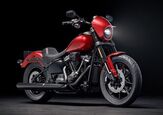



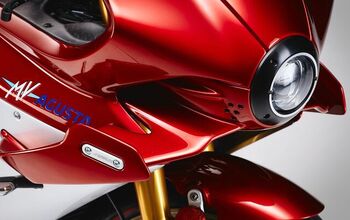


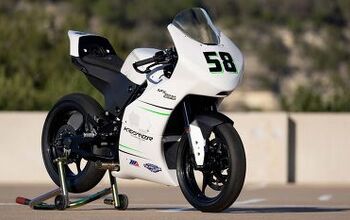



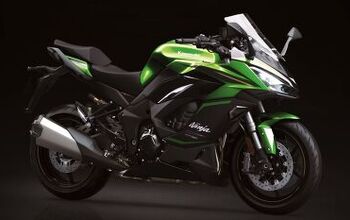






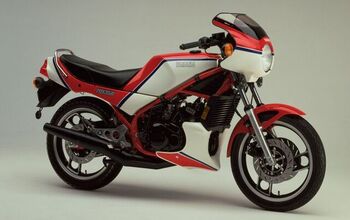



Comments
Join the conversation
Here come ChinaClaus for the name
buyout.
Dear KTM
Why not entering the huge market of Underbone bikes in South East Asia region??
Japanese bikes able to survive more then 50 years in Asia.
Not to mention with colloboration and investment with local partner.
Malaysia Modenas from nobody now with Kawasaki as premier partner are thriving success.
With KTM superb quality and MotoGP experiences i'm sure they can design awesome underbone at affordable asian economic income.
Good luck !!